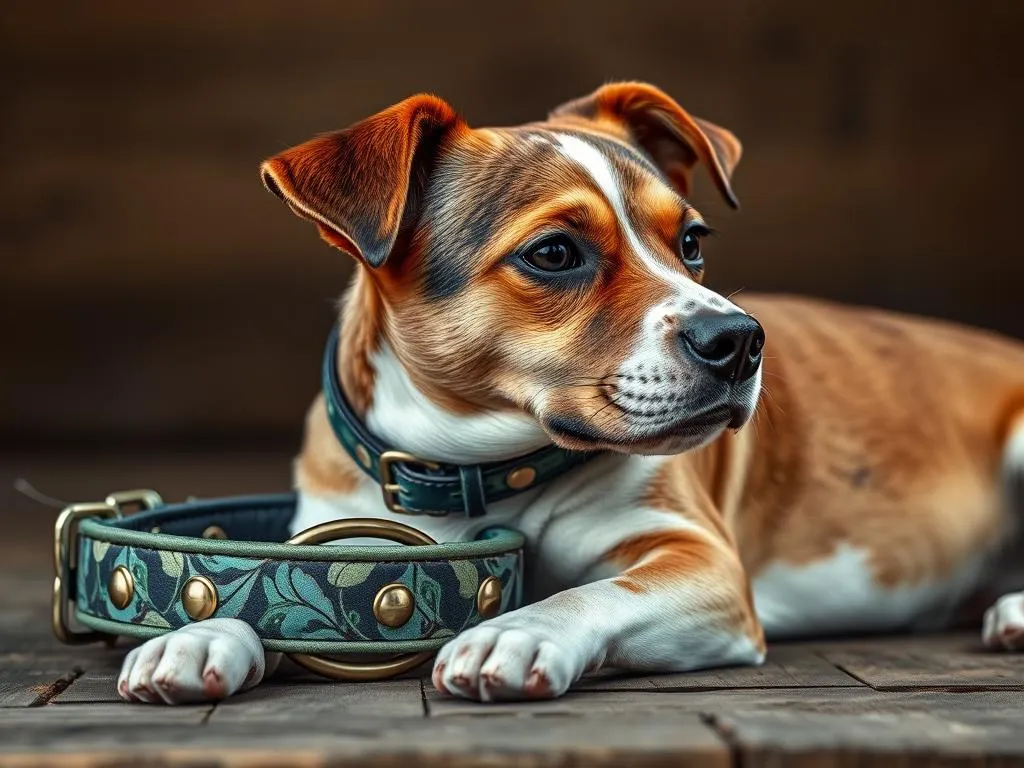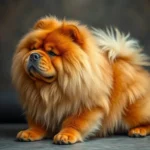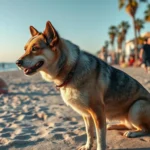
Choosing the right collar for your large dog is more than just a matter of style; it’s essential for their safety, comfort, and training. With so many options available, understanding the different types and features can help you make an informed decision that suits your canine companion’s needs. This article will guide you through the best large dog collars on the market, highlighting key features, and providing useful tips to ensure you find the perfect fit for your furry friend.
Understanding Large Dog Collars
What Makes a Collar “Large”?
When it comes to dog collars, “large” typically refers to collars designed for dogs weighing between 50 to 100 pounds or more. Breeds like German Shepherds, Golden Retrievers, and Rottweilers fall into this category. As dogs in this weight range have more muscle and strength, selecting a collar that can withstand their power is crucial. A properly sized collar not only ensures your dog’s comfort but also prevents escapes and enhances safety during walks or training.
Types of Dog Collars
The type of collar you choose can significantly impact your dog’s training and walking experience. Here are a few common types you should know about:
- Flat Collars: The most common type, suitable for everyday wear. They typically have a buckle and a D-ring for attaching tags and leashes.
- Martingale Collars: Designed for dogs that tend to slip out of their collars, these have a unique design that tightens slightly when pulled. They are great for training.
- Head Collars: These attach around the dog’s muzzle and are effective for controlling strong pullers. They can help redirect a dog’s attention and ease anxiety during walks.
- Harnesses vs Collars: While collars are essential for identification and leash attachment, harnesses distribute pressure across the dog’s body, making them ideal for dogs that pull or have respiratory issues.
Key Features to Consider
Material
The material of a collar plays an important role in its durability and comfort. Here are some popular options:
- Nylon: Lightweight and available in many colors and patterns. However, it may fray over time.
- Leather: Strong and durable, leather collars offer a classic look. They can be heavy, so ensure they’re suitable for your dog’s size.
- Biothane: This synthetic material is waterproof and easy to clean. It combines the benefits of leather with the durability of nylon.
Each material comes with its pros and cons, so consider your dog’s lifestyle and any potential allergies when making your choice.
Durability
Large dogs can be tough on collars, so durability is crucial. Look for collars with reinforced stitching, sturdy buckles, and strong materials. Signs of a durable collar include resistance to fraying, fading, and tearing.
Adjustability and Fit
A well-fitting collar is essential for your dog’s comfort and safety. Measure your dog’s neck circumference and ensure there’s room for two fingers between the collar and your dog’s neck. Adjustable collars are especially beneficial for growing dogs, allowing you to modify the size as they grow.
Comfort
Opt for collars with padding or soft edges to prevent chafing. Breathable materials are also important, especially in warmer weather, to keep your dog comfortable during outdoor activities.
Safety Features
Safety should always be a priority. Look for collars with reflective elements for visibility during nighttime walks, quick-release buckles for easy removal, and breakaway collars that prevent choking if the collar gets caught.
Top Picks for Best Large Dog Collars
Product Reviews
Collar A: Blueberry Pet Classic Solid Color Dog Collar
The Blueberry Pet Classic collar is a durable yet stylish option for large dogs. Made from high-density nylon, it features a sturdy plastic buckle.
- Key Features: Adjustable, available in various colors, and includes a D-ring for leash attachment.
- Pros: Affordable, machine washable, and lightweight.
- Cons: May not be as durable as leather options.
- Price Range: $15 – $25
Collar B: PetSafe Premier Martingale Collar
Designed for training, the PetSafe Premier Martingale collar is ideal for preventing escape artists.
- Key Features: Made from strong nylon, it tightens slightly when pulled, providing better control.
- Pros: Prevents slipping, good for strong pullers, and adjustable.
- Cons: Requires some training to use effectively.
- Price Range: $20 – $30
Collar C: Black Rhino Comfort Collar
The Black Rhino Comfort Collar is perfect for dogs that need extra comfort. It’s padded and made from durable materials.
- Key Features: Reflective stitching, heavy-duty buckle, and padded interior.
- Pros: Comfortable for all-day wear, secure fit, and stylish design.
- Cons: Slightly bulkier than other options.
- Price Range: $25 – $35
Comparison Table
| Collar | Material | Durability | Adjustability | Price Range |
|---|---|---|---|---|
| Blueberry Pet Classic | Nylon | Moderate | Yes | $15 – $25 |
| PetSafe Premier Martingale | Nylon | High | Yes | $20 – $30 |
| Black Rhino Comfort | Padded Nylon | High | Yes | $25 – $35 |
Tips for Choosing the Right Collar
Assessing Your Dog’s Needs
Consider your dog’s activity level and behavior. If your dog is highly active or tends to pull, a martingale collar or harness may be a better fit. For calmer dogs, a flat collar may suffice.
Aesthetic Considerations
Colors and patterns can reflect your dog’s personality. Personalization options, like name tags or embroidered names, can add a unique touch while enhancing safety.
Budgeting for a Quality Collar
Quality collars typically range from $15 to $50. While it may be tempting to go for budget options, investing in a durable collar can save money in the long run by avoiding frequent replacements.
Maintenance and Care
Cleaning Your Dog’s Collar
Regular cleaning is essential for hygiene. For nylon collars, machine washing is often safe, while leather collars may require special cleaners. Aim to clean your dog’s collar every few weeks, depending on their activity level.
Inspecting for Wear and Tear
Regularly check for signs of wear, such as fraying edges, cracks in leather, or weakened buckles. If you notice any damage, it’s time to replace the collar to ensure your dog’s safety.
Alternative Options
Custom Collars
Custom collars offer a unique opportunity to express your dog’s personality. You can find options that allow for personalized embroidery or unique designs, ensuring your dog stands out.
Collars for Specific Needs
For training purposes, you might consider specific collars designed for correction or control. Additionally, if your dog has skin sensitivities, look for collars made from hypoallergenic materials.
Conclusion
Selecting the right collar for your large dog is crucial for their comfort, safety, and style. By considering your dog’s needs, understanding the various types of collars, and evaluating key features, you can make an informed decision. Remember, a well-chosen collar not only enhances your dog’s appearance but also contributes to a better training experience and a safer walking routine.
FAQs
How do I know if a collar fits my large dog?
Measure your dog’s neck and ensure you can fit two fingers between the collar and their neck. An adjustable collar can also help achieve the perfect fit.
Can I use the same collar for different activities?
While some collars are versatile, specific activities may require specialized collars. For example, a training collar may not be suitable for everyday use.
How often should I replace my dog’s collar?
Inspect the collar regularly for wear and tear. Replace it immediately if you notice any signs of damage. Generally, a quality collar can last several years with proper care.
Are there collars specifically for aggressive dogs?
Yes, there are collars designed for aggressive dogs, such as head collars and martingale collars, which offer better control and help manage pulling. Always consult a professional trainer for advice tailored to your dog’s behavior.









